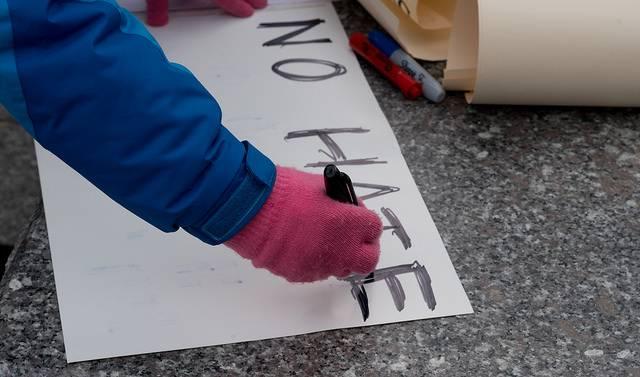Coastal Wetlands and Flood Damage Reduction: Can Insurance Save Wetlands?


By Michael W. Beck and Jean-Bernard Crozet
An estimated 840 million people around the world live with the risk of coastal flooding. With our changing climate, the danger posed by hurricanes, floods and storms is increasing. These events have a huge economic impact, too. In 2016 alone, insurers paid out $50 billion for natural disasters; there was a further $125 billion in uninsured losses, and many of these losses were from coastal storms.
At the same time, wetlands -- which represent our first line of defense from coastal storms and flooding -- are being lost at alarming rates.
It’s no surprise that the theme for this year’s World Wetlands Day is Disaster Risk Reduction given the role these habitats play in risk reduction, but it has been difficult to put a number on this value. Fortunately, new research that quantifies the protection offered by wetlands may help garner support to protect them.
In 2012, Hurricane Sandy ravaged the northeast United States, causing more than $50 billion in damage and severely affecting economic activity. The second costliest storm in U.S. history left us with important lessons: our vulnerability to destructive storms is increasing, and recovery from disasters can be slow. However, we also learned some important lessons about how nature can offer solutions to reduce our coastal risk.
An unlikely group of conservationists, engineers and insurance risk experts joined forces to study the impact of Sandy and other storms on property damages in work supported by the Lloyd’s Tercentenary Research Foundation. The results show that natural storm defenses such as coastal wetlands help reduce waves and storm surge, protecting people and property. Using flood models advanced by the insurance industry, the study shows that wetlands likely saved more than $625 million in flood damages across 12 states during Sandy. In New Jersey, wetlands prevented an estimated $425 million in private property damages.
To be clear, wetlands don’t just matter for catastrophic events — they matter every year. In Ocean County, New Jersey, wetlands reduced annual expected losses by 20 percent on average and over 50 percent for properties built just a few feet above sea level.
These results were surprising, because in many places along the Northeast coast, only thin bands of coastal wetlands remain of the formerly extensive natural storm barriers. Where wetlands do remain, the average damage reduction during Sandy was greater than 10 percent.
That’s another important lesson: Restoring and protecting wetlands will potentially save taxpayers hundreds of millions of dollars. Investing in healthy wetlands is a highly cost-effective solution for protecting against coastal risks. Healthy wetlands also provide many other benefits, including fishery production and recreation, and they are some of the most effective natural solutions for reducing greenhouse gases and climate change.
Around the world, many properties are built on previously existing wetlands. These properties are doubly increasing our risk—by building in the highest risk areas, and by destroying our first line of coastal defenses. Yet thus far, the insurance industry has not played a large role in examining the role of natural defenses in reducing risks, and in pricing coastal wetlands effectively. We think that can change.
If the protection benefits of natural defenses were better reflected in insurance models and in insurance industry practices, that could translate into lower premiums and monetary savings for communities that conserve their natural assets — a powerful incentive for protecting wetlands. Investing in nature is good insurance for all.
We have made remarkable strides in wetland restoration. We now have robust tools that help assess where wetland restoration may be most effective in risk reduction. Through the collective efforts of many across conservation, insurance and academia we can work to build coastal resilience in the face of climate change, coastal development and other challenges.
This World Wetlands Day, let’s champion the protective role of wetlands and advocate for increased investment in our natural defenses.
###
The study was led by the University of California, Santa Cruz; The Nature Conservancy and the Wildlife Conservation Society in association with Risk Management Solutions and Guy Carpenter & Company. The project was supported by the Lloyd’s Tercentenary Research Foundation.
Dr. Michael W. Beck is Lead Marine Scientist for The Nature Conservancy and an Adjunct Professor at the University of California Santa Cruz.
Jean-Bernard Crozet is Head of Underwriting Modelling at MS Amlin and a Trustee of Lloyd’s Tercentenary Research Foundation.
Image © Erika Nortemann/TNC
Thanks to Donald Trump, Corporate Social Responsibility Just Became Mainstream


And just like that, the new corporate social responsibility is born.
When the concept of corporate social responsibility (CSR) began to gain traction among mainstream consumers more than a decade ago, corporate champions of the movement were heralded for developing programs primarily focused on enhancing the greater good, though often at the expense of the bottom line. Over time, we have seen CSR leaders create programs that elegantly and strategically weave together business and social/environmental goals.
But over the past week, in the wake of President Donald Trump’s travel ban, we are witnessing a new chapter in the evolution of CSR that is being entirely driven by companies’ immediate interests in their most vital assets: their employees.
Most companies touting their corporate culture are quick to highlight nurturing, positive work environments for their employees. But when the federal government threatens to prevent those employees from being able to report to work, corporate social responsibility suddenly hits home -- taking on an entirely new meaning that has forced many companies to act more urgently in the interests not only of society, but also their own bottom line.
On the front lines of this new corporate activism stands the tech industry: From Lyft to Google to literally hundreds of other companies, the tech world quickly proclaimed their disapproval for a policy that is not only rooted in religious discrimination, but also directly and deeply impacts these businesses’ ability to operate.
While CSR has historically been designed to help those outside the four walls of a corporation, suddenly these companies are being compelled to act because, if they stand on the sidelines, they will suffer the immediate and costly implications of losing some of their most valued employees.
One week ago, if you searched for large public companies advocating on behalf of refugees, one of the only names that would have surfaced is TripAdvisor, which commits millions each year to support global relief in disaster zones.
But today, seemingly overnight, we are seeing the CEOs of hundreds of companies stand in support of basic human rights, opposing religious discrimination, and collectively calling on the reversal of this executive order. Starbucks, a longtime champion of conscious capitalism, has even gone so far as to commit to hiring 10,000 refugees.
Despite the negative consequences of Trump’s executive order, we should celebrate the fact that so many giants in the tech industry are suddenly staunch advocates for refugees and our nation’s immigrant population. Not long ago, most CEOs opted to stay out of public political debate, usually so as not to upset or ostracize customers who may hold opposing views. Today, as corporate America grapples with the very real possibility of losing some of its most talented employees, the line between corporate social responsibility and political activism is suddenly blurred, calling for our country’s primary employers to be more vocal and politically active than ever.
Certainly, nobody would consider Donald Trump a champion of corporate social responsibility, and yet his actions are unwittingly causing the most widespread and vocal mobilization of concerned corporate leaders perhaps in our nation’s history.
The unintended consequence of Trump’s executive order is the birth of a new era of corporate responsibility, where companies advocate for the well-being not just of underserved populations historically addressed in “traditional” CSR programs, but also of those very people who enable these companies to thrive.
So we thank you, President Trump. With the stroke of a pen, you’ve roused the sleeping corporate giant -- and corporate social responsibility may never be the same.
Image credit: Flickr/Victoria Pickering
Renewables Dominated New U.S. Power Generation in 2016


Fears that a new Trump administration could roll back advances clean energy may be seriously overblown. Such assumptions are belied by data released in the most recent update from the Federal Energy Regulatory Commission (FERC).
Of the over 26 gigawatts of new energy capacity added throughout the United States last year, the vast majority of it came from renewables, the FERC found.
In fact, the total amount of biomass, waste heat, solar and wind power comprised over 60 percent of new power generation last year. Add the 314 megawatts of new hydropower, and 61.5 percent of the country’s increase in electrical power came from renewable sources.
In contrast, a third of all new power generation came from natural gas, which continued to be the largest factor causing the decline of coal-fired power plants. If there will be any such comeback for coal, there is a steep mountain to climb: Only 45 megawatts, or 0.17 percent of all new capacity, came from coal last year.
Natural gas is still the leader in new power generation across the U.S., with 8.8 GW of new capacity launched last year. Wind power, which was the largest source of new power in 2015, witnessed a remarkable decline, with an 11 percent decrease in new capacity last year compared to the year before. But those losses were more than compensated for with a huge surge in solar power. New solar capacity more than doubled in 2016 with 7.8 GW of new power capacity installed, more than double the 2015 total of 3.5 GW.
With this growth in renewables comes the increase in another statistic that the new administration will have a hard time ignoring: jobs.
Almost 1 million Americans now work within growing clean-energy sectors like solar and wind, along with industries such as energy efficiency and electric vehicles. And according to the U.S. Department of Energy’s latest industry employment report, the difference is stark when looking at electric power generation. Employment within the renewable power generation sector now outpaces fossil fuel energy jobs by almost by 5 to 1, according to the DOE.
And for those who insist the renewables debate is marked by a red state-blue state divide, think again: Some of the largest renewable energy projects were installed in America’s heartland. Those projects include the 400 MW Grande Prairie Wind Farm Project in Nebraska; the 301 MW Ida Grove Wind Project in Iowa; and the 250 MW Hidalgo Wind Farm in Texas. Large wind farm projects of 200 MW or above were also launched in Kansas, Missouri, North Carolina and Oklahoma. In fact, the list of new electrical power installations is dominated by states that voted for Donald Trump.
"The focus of the new Trump administration on fossil fuels is not only environmentally irresponsible but totally wrong-headed in light of the latest FERC data," Ken Bossong, executive director of the Sun Day Campaign, told TriplePundit in an email. "Year-after-year, renewables are proving themselves to be the energy sources making America great again."
Image credit: Leon Kaye
Budweiser, the 'Great American Lager,' Plans Immigration Super Bowl Ad


In a dramatic twist of timing, the iconic American beer brand Budweiser is set to unspool an ad about immigration before an audience of millions of football fans this Sunday during the Super Bowl.
The ad portrays the story of Budweiser founder Adolphus Busch, a German citizen who persevered despite experiencing prejudice after immigrating to the U.S.
The ad has apparently been in the works for a year. So it's not a direct response to the Trump administration's Muslim travel ban, which touched off a firestorm of criticism in the U.S. and beyond. But Trump's anti-immigrant rhetoric during the 2016 campaign most likely influenced the company to push-back, especially considering that Budweiser recently became part of a the multinational brewing company AB-InBev.
Immigration and ambition
Budweiser is positioning the immigration spot as a story about ambition, the company told AdWeek. AdWeek cites Marcel Marcondes, VP of U.S. marketing for the brand's parent, Anheuser-Busch:
"For Budweiser, the company wanted to 'celebrate ambition' by going back to its roots and telling the story of its co-founder, Adolphus Busch, and how he came from Germany to the United States in 1857 with the dream of founding Budweiser," wrote Kristina Monllos of AdWeek."Celebrating the American Dream is part of why the company is 'comfortable putting America on our label,' added Marcondes, who said the company plans to put America on its label again this year."
The ad doesn't dwell on immigration issues throughout, but it does include an early sequence that portrays the wall of insults and physical violence that Busch encountered upon arrival in the U.S.
It's a compelling story, and Budweiser didn't cut corners. The creative force behind the ad is Anomaly, the agency behind the 2014 Budweiser "Puppy Love" spot, which owns bragging rights to the most YouTube views of any Super Bowl ad since 2007.
Immigration and AB-InBev
Here's where it gets interesting. The immigration issue is a particularly sensitive one for Budweiser as part of AB-InBev. The company was formed in 2008 when Budweiser's parent, Anheuser-Busch, combined with the global brewing leader InBev.
The merger formed the world's largest brewing company, with operations and brands based around the world.
That makes Budweiser part of a global corporate culture that is rapidly moving into a more sustainable model, including with respect to waste and water resource issues.
AB-InBev also embraces the United Nations' principles on human rights.
Here's the money quote on human rights from AB-InBev:
"We are committed to business practices that do not infringe on human rights and that align with various international standards of responsible business conduct, including the United Nations (U.N.) Global Compact, the Universal Declaration of Human Rights and the International Labor Organization's Declaration on the Fundamental Principles and Rights at Work."Our Global Human Rights Policy sets out standards, expectations and commitments in relation to our responsibility to respect human rights within our own company and to not knowingly contribute to the violations of human rights by other parties."
AB-InBev also broadly expresses its outlook in a "who we are" statement:
"... We are committed to driving growth and building a company to last – not just for a decade, but for the next 100 years. And we are excited to work toward our Dream: Bringing people together for a better world."
AdWeek also noted that the Budweiser spot is one of several planned for Anheuser-Busch brands during the Super Bowl.
Complementing the immigration spot's underlying theme of a connected world, Anheuser-Busch is also using the occasion to roll out a new slogan for Bud Light, "Famous among friends," that focuses on the small moments between ordinary people.
Your move, President Trump (er, Steve Bannon).
Image (screenshot): Budweiser Superbowl ad via YouTube.
UK company vehicle fleets focus on reducing emissions


Lyft Stands up to Trump and the Refugee Ban, While Uber Stumbles


The ride-sharing company Lyft wasted little time responding to Donald Trump’s executive order that temporarily bans refugees and other citizens from seven majority-Muslim nations from entering the U.S.
In a blog post over the weekend, the company assailed the executive order as “antithetical to both Lyft’s and our nation’s core values” and promised that it would donate $1 million to the American Civil Liberties Union (ACLU) over the next four years.
Meanwhile, Uber’s CEO and co-founder, Travis Kalanick, sent an email to employees promising to find a way to support Uber drivers “pro bono” over the next three months in the event they are stuck overseas or unable to return to the U.S. The company also promised to provide 24/7 legal assistance and a $3 million fund to assist drivers with translation and immigration services.
Both companies, depending on one’s point of view, are doing what they can to confront a travel ban that's on shaky legal standing, is discriminatory, singles out seven countries with no clear logic and, to some, is a ruse to distract citizens from even more destructive policies.
Nevertheless people have been hurt by the executive order, including a 5-year-old boy who was detained at Washington Dulles International Airport. And both ridesharing services are arguably stepping up to fight this unjust and illogical ban.
The problem is that Lyft appears to stand tall as it confronts the Trump administration, while Uber has suffered a backlash. It all dates back to this ill-timed tweet on Saturday:
[embed]https://twitter.com/Uber_NYC/status/825502908926066688[/embed]
The problem is that, while Uber was advertising its services, the New York Taxi Workers Alliance and its 19,000-strong membership pledged to refuse to pick up any passengers at the airport for an hour in order to protest the ban. They asked Uber and Lyft to join in the strike.
Lyft stayed out of the fray and announced its ACLU donation. But while the taxi union urged the public to resist the Trump administration’s travel ban, Uber’s NYC office announced that it was suspending the company's oft-controversial surge pricing.
A few hours later, Uber denied it was trying to break the strike, and posted a link to Kalanick’s email outlining his opposition to the travel ban.
But unfortunately for Uber, the outrage on social media was already in full force, with #DeleteUber trending on Twitter.
The episode was yet another headache for a company has already had a turbulent year, during which it ran afoul of the public and transport officials from San Francisco to Austin.
And with Kalanick also on one of Trump’s advisory councils (along with Elon Musk and PepsiCo’s Indra Nooyi), it became even easier for Uber customers to drop the service. Tweets like this one were commonplace:
[embed]https://twitter.com/MikeLynch09/status/825719651233579008?ref_src=twsrc%5Etfw[/embed]
Kalanick made the valid point that any company has to work with politicians and leaders of all political stripes worldwide. He also hinted that he will bring up the travel ban at the council’s first meeting this week at the White House. In addition, Kalanick also signed a letter with other technology leaders that oppose this immigration ban.
The damage to Uber’s already fragile reputation, however, will be hard to undo. “Working with Trump is a business minefield,” Brian Solomon of Forbes declared on Monday. He went on to warn companies that trying to be on both sides is fraught with peril -- an assertion that surely holds true in this case.
Uber’s clumsy tweet on Saturday did the ride-sharing giant no favors and further sullied its reputation as a corporate bully and one eager to make a quick buck at the expense of integrity. But trying to have it both ways with a man who appears to make decisions based on his personal financial interests will cause Uber to lose even more trust with a fickle customer base who are quick to delete apps and change loyalties at a moment’s notice.
Image credit: Rhododendrites/Wiki Commons
Scientists Seek a 'Vaccine' For Climate Denial


We’ve all heard about the dangers of antibiotic-resistant bacteria: nasty little bugs that simply do not respond to conventional treatment. But another type of resistance could potentially be even more dangerous: humans with fact-resistant attitudes.
This is a problem that seems to have flared up recently, as fake news competes with real news, confusing the citizenry and leading to decisions that may well prove regrettable.
Misinformation is especially prevalent when it comes to the subject of climate change, where a substantial number of people have become entrenched in an attitude that no amount of factual information or rational argument can change.
It’s a question that researchers at Cambridge University have been studying in hope of finding some treatment -- perhaps in the form of a 'vaccine' -- that could protect the broader population.
Looking through a medical lens, you could say that these individuals have been infected by fact-resistant misinformation. The researchers wanted to know if their research subjects could be “inoculated” against such misinformation. By adding a small amount of misinformation to otherwise factual information, the researchers hoped to build up immunity to falsities. Here's how it worked.
At the outset, subjects shown misinformation dropped their belief in a scientific consensus by 9 percent. At the same time, those shown only factual information increased their acknowledgement of that scientific consensus by 20 percent.
But those gains were negated when the subjects were shown misinformation in the form of a fake petition of scientists, with only 0.50 percent remaining convinced of the consensus. This shows how powerful false information can be.
The scientists exposed a second test group to a discussion of factual distortion often used by politically-motivated groups. They then repeated the above, and found that the negation effect of the misinformation was largely eliminated.
Specifically the general impact of this cognitive “inoculation” was a shift of 6.5 percentage points back toward acceptance of the scientific consensus, even with the exposure to misinformation.
When more detailed information about the nature of the misinformation was given, the retention rate grew to almost 13 percentage points.
This demonstrates that, other than providing factual information, calling out misinformation and discrediting it with clear evidence of manipulation can be an effective way to avoid losing support for a sustainability agenda to the widespread presence of politically-motivated falsities and half-truths.
"The idea is to provide a cognitive repertoire that helps build up resistance to misinformation, so the next time people come across it they are less susceptible," said lead researcher Dr. Sander van der Linden, a social psychologist from the University of Cambridge and director of the Cambridge Social Decision-Making Lab,
"It's uncomfortable to think that misinformation is so potent in our society," van der Linden continued. "A lot of people's attitudes toward climate change aren't very firm. They are aware there is a debate going on, but aren't necessarily sure what to believe. Conflicting messages can leave them feeling back at square one.” Furthermore, “Misinformation can be sticky, spreading and replicating like a virus."
Given two conflicting sets of information, people are left with the choice of which one to believe. All kinds of different factors play into that.
The “vaccine” really consists of information that explicitly pulls back the curtain on the misinformation, showing where it comes from and the motivation behind it.
The idea is not new. In fact, these techniques have been used by both the tobacco and the fossil fuel industries to inject public doubt about scientific arguments being made on behalf of the public good.
The researchers also found surprising results when they looked at the political affiliation of the subjects.
Before inoculation, the fake news negated the factual for both Democrats and Independents. In the case of Republicans, the fake info actually swung their opinions by a further 9 percentage points.
However, once the “inoculation” was given, the positive effects of the accurate information were preserved across all political parties.
Says van der Linden: "We found that inoculation messages were equally effective in shifting the opinions of Republicans, Independents and Democrats in a direction consistent with the conclusions of climate science."
That means that when “inoculated,” subjects developed an immunity to the ubiquitous propaganda that attempts to cast doubt on the clear consensus of scientists working on behalf of the public good. The subjects, on average, maintained their view without backsliding.
Of course, "There will always be people completely resistant to change," van der Linden conceded, "but we tend to find there is room for most people to change their minds, even just a little."
These findings are particularly important at this moment, when the Donald Trump administration seems intent on waging an all-out war against climate science in order to protect the profits of the fossil fuel industry.
Image credit: Flickr/NIAID
Starbucks Faces Boycotts After Pledging to Hire 10,000 Refugees


On Friday, President Donald Trump signed an executive order banning citizens from seven majority-Muslim countries from entering the U.S. for at least 90 days. Protests erupted almost immediately, and business leaders lined up to take a stand against the order.
One of those execs is Starbucks CEO Howard Schultz, who promised to hire 10,000 refugees over five years. In a letter to employees, Schultz wrote about his intentions to respond to Trump’s controversial travel ban and his first week in office.
“There are more than 65 million citizens of the world recognized as refugees by the United Nations, and we are developing plans to hire 10,000 of them over five years in the 75 countries around the world where Starbucks does business,” Schultz wrote. “And we will start this effort here in the U.S.”
It wasn’t long before the hashtag #BoycottStarbucks started trending on Twitter. The bulk of the tweets complained that Starbucks plans to favor hiring refugees when Americans remain out of work.
Critics also questioned why Starbucks launched an initiative supporting refugees but not one supporting veterans, but this claim is largely baseless: Starbucks has an active veterans employee network, as well as dedicated veterans hiring and education initiatives.
This isn't the first time #BoycottStarbucks hit Twitter. Starbucks previously came under fire after a video surfaced of a self-proclaimed Trump supporter alleging a barista wouldn’t serve him because she was anti-white.
The boycott calls were quickly followed by the #TrumpCup challenge -- which called on Trump-supporting Starbucks fans to give baristas the name "Trump" when ordering. Since Starbucks baristas must shout out a customer's name when an order is finished, the idea was to compel a resounding chorus of the then-candidate's name in Starbucks across the country. Racial justice advocates tried something similar last summer, giving baristas the name "Black Lives Matter."
But Starbucks recent political statement came straight from the top. Along with the initiative to hire scores of refugees, Schultz said he stands in solidarity with the Deferred Action for Childhood Arrivals (DACA) program. DACA was introduced in 2012 under the Obama administration to allow undocumented minors who entered the country unlawfully a two-year period of deferred action from deportation and citizenship eligibility.
Schultz also wrote that Starbucks will strengthen its partnership with Mexico, despite Trump’s promise to create a physical border between the U.S. and its southern neighbor.
In a section of the letter titled “Building Bridges, Not Walls, With Mexico,” Schultz wrote: “Coffee is what unites our common heritage ... We stand ready to help and support our Mexican customers, partners and their families as they navigate what impact proposed trade sanctions, immigration restrictions, and taxes might have on their business and their trust of Americans.”
The letter also touched on the company’s commitment to providing its employers with adequate health care. But make no mistake, the biggest splash came from Schultz’s refugee employment commitment.
With 90 million customers and 25,000 stores worldwide, Schultz said he is committed “to inspire and nurture the human spirit, one person, one cup and one neighborhood at a time — whether that neighborhood is in a Red State or a Blue State; a Christian country or a Muslim country; a divided nation or a united nation.”
Image courtesy of Starbucks (press use only)
Could Floating Cities Help Us Adapt to Climate Change?


Will the smart cities of the future float?
With data suggesting sea levels could rise by as much as six feet before the end of this century, the possibility of building floating communities has captured plenty of imaginations. One Silicon Valley startup suggested -- and even patented -- “self floating environments” that would create communities immune to rising seas. Several years ago, a Paris architecture firm drew up renderings for biomimicry-inspired floating cities that could house climate refugees.
Now, a South Pacific government has entered into an agreement with a California NGO that will supposedly make such communities the reality.
Earlier this month, French Polynesia (which includes Tahiti, its largest island) signed a memorandum of understanding with the Seasteading Institute to embark on a development called the Floating Island Project.
Upon completion, the island or islands will have their own “special governing framework” and will comprise an “innovative special economic zone." The territory’s housing minister, Jean-Christophe Bouissou, touted the agreement as one allowing French Polynesia to “find solutions to the problems facing Island communities by building ocean platforms.”
Founded in 2008 by Patri Friedman and initially funded by Paypal co-founder Peter Thiel, the Seasteading Institute at first had a lofty and libertarian goal to build in international waters in order to “establish new nations and spur competitive governance from the outside.” But the expense of building in remote oceanic areas, along with the access to land these proposed cities would need, convinced the organization to build its first prototypes adjacent to a nation or territory.
And these floating cities, in the shape of a small square or pentagon at least 50 meters (180 feet) on each side, promise a bevy of sustainable benefits.
They would be powered by solar, allowing them to function completely off the grid. Their design also suggests that they could host small-scale aquaculture and desalination projects.
But at first, they will not come cheap: Joe Quirk, an author and spokesman for the Seasteading Institute, said that the cost to build floating communities and house residents in three-story homes would cost “just over” $500 a square foot – a price equivalent to real estate prices in London or Manhattan.
And therein lie some head-scratching questions. Randolph Hencken, executive director of the Seasteading Institute, told the New York Times the cost of building these cities could become cheaper and more scalable as more of them are constructed.
That would allow these communities to house citizens in low-lying island nations that are most vulnerable to sea-level rise. But as outlined in the Guardian, plenty of Tahitians and other French Polynesians see such a development as a ruse to allow wealthy foreigners to move to the South Pacific in order to avoid paying taxes in their home countries.
Furthermore, challenges such as waste management and procuring resources such as food are overlooked and left unanswered.
Then there are the logistics that could become involved if a community no longer wants to be subjected to a particular government: Where would residents move its platform?
Even Thiel, who has not been involved with the Seasteading Institute for several years, told Maureen Dowd of the New York Times earlier this month that such a utopia will not be the reality until far into the future. “They’re not quite feasible from an engineering perspective," he said.
Unless the Seasteading Institute and its allies can prove these floating platforms are more of a tangible climate change solution than a futuristic vacation or duty-free getaway, critics will insist that such money could be better spent on climate mitigation, healthcare or education.
Image credit: Gabriel Sheare, Luke & Lourdes Crowley, and Patrick White (Roark 3D)
Apple to Launch a 200 Megawatt Solar Project in Nevada


Citing the need to power its expanding data center in Reno, this week Apple announced a partnership with state utility NV Power -- which will result in an additional 200 megawatts of solar power in northern Nevada.
Although a location has not yet been announced, both parties say the new solar plants will be in operation by early 2019.
The commitment in Nevada is part of what Apple claims to be an embrace of renewables. Late last year, the tech giant announced from China that it had made its first investments in wind power, which the company described as a partnership with the Chinese government to wean the country off fossil fuels such as coal.
Apple already has a reputation as an active investor, and even broker, of solar power. Last fall the company joined the global clean energy initiative RE100, central to what Apple says is its goal to run its entire global operations on renewables.
The agreement is also a shot in the arm for NV Energy as it strives to boost its renewables portfolio in the Silver State. The company says it already manages 491 megawatts of solar power capacity in the state of 2.8 million people, with another 529 megawatts of solar either under construction or under regulatory review. NV Energy says a total of 1.9 gigawatts of energy in Nevada is generated by sources such as geothermal, hydropower, a wind power farm and several small biomass projects.
But not everyone in Nevada’s business community has a smooth working relationship with NV Energy, which is why the Apple agreement could be the first step in repairing its reputation with many of the state’s largest companies.
Companies such as MGM Resorts International and Wynn Resorts claim they pulled the plug from NV Energy because of excessive costs. As the Las Vegas Sun reported last fall, after a year of negotiations and a search for an alternative energy provider, both companies together paid over $100 million in fees to sever their ties with the utility.
MGM and Wynn insisted the move was necessary in order to save on energy costs, as well as to increase the amount of power that they could source from renewables. On that point, MGM has already set the standard for renewables investment in Nevada with the massive solar array it installed on top of its Mandalay Bay property in Las Vegas.
But back to Reno: This newest solar project financed by Apple is another small step in what the tech company describes as its effort to mitigate climate change risks. Apple says its investments in renewables amount to 4 gigawatts total worldwide, which will prevent the emissions of 30 million metric tons of carbon dioxide by 2020, or the equivalent of removing 6 million cars from roads each year.
Image credit: chicadecasa/Flickr